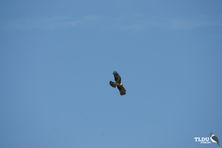
Shoppers Feedback:
Jan 17, 2017
Hello Ros,
I have now paid the invoice, but I would like to write to you just to say a big THANK YOU for getting me the Penguin!
The ChatterMate Penguin became a nice memory for me when I was in New Zealand, and I am so greatful to you for arranging so that I could have it! :-)
Thank you so much!!!!!!!!!!!
Regards,
Malin
Hi Ros,
Many thanks for your very kind email. I really appreciate your prompt reply!
I appreciate your advice regarding the decorations and customs. These are a gift for my daughter’s exchange student family so when she returns home on the weekend I will show her and see if she loves them as much as I do!
Thanks so very much again - I am truly grateful for your kind assistance.
Kind Regards
Bernadette
Ros,
Thanks again for the great customer service. It's a refreshing change!
Best regards,
Trevor
Hey Roz,
Thank you for your emails. Just loved my first order. The cute little Aussie bush critters are going to be used for an office Christmas decoration. My colleagues also liked them and talked about making an order to your site. I'll send you a photo when completed.
I'll be ordering more to send to my daughter's host family in America.
Fabulous service from you.
Kind regards,
Michelle
Thankyou. Order arrived today. One very happy grandson with his new beastly binoculars.
Regards,
Irene
- Home
- Wild Wonders
- Shop
- Aromas of Australia
- Australian Made
- Books
- Book Marks
- Christmas Decoration Sale
- Christmas Decorations
- Clocks
- Drink Holders
- Garden & Outdoor
- Gift Wrapping & Cards
- Home & Giftware
- Jewellery
- Keyrings
- New Products
- Pencils & Pen Holders
- Photo Frames
- Plush Toys
- Plush with Sound
- Sheepskin Rugs
- Stationery
- Stone Carvings
- Toys & Games
- Travel Goods
- Wedding
- Wild Figurines
- Wildlife Safety Products
- Wind Chimes
- Wine Charms
- View All Products
- Wildlife
- Australiana
- Explore
- Contact Us
Little Eagle

Quick Facts
| Length: | 50 cm |
| Height: | - |
| Weight: | 815 grams |
| Colour: | Light to dark brown |
| Habitat: | Woodland - Forest areas and open country |
| Food: | Live mammals, rabbits and insects |
| Predators: | - |
| Status: | Secure |
The Little Eagle is a small, powerful stocky eagle, with a short broad head and moderately long tail, square-cut at the tip when closed. The legs are heavily feathered.
When perched the Little Eagle has a short crest. Plumage varies from light to dark brown, with a pale broken 'M' across the upperparts, which is visible from a distance. There is also a pale M-shaped band on the underwing. It has long broad wings spanning over 1m, with dark 'fingered' tips. It soars in tight circles, very high on thermals or up-draughts, gliding on flat wings. The female is larger than the male.
The Little Eagle is similar in size to the Whistling Kite and the light (form) of the Little Eagle may cause confusion. The Little Eagle's flight pattern - soaring in tight circles with flat wings - is distinctive. The underwing 'M' pattern is diagnostic, as are the long, broad wings.
The Little Eagle is widespread in mainland Australia.
The Little Eagle is seen over woodland and forested lands and open country, extending into the arid zone. It tends to avoid rainforest and heavy forest.
The Little Eagle is partly migratory. Adult birds generally remain in the same area, while the young birds disperse.
The Little Eagle searches for prey on the wing or from a high exposed perch, taking prey from the ground, the shrub layer or the canopy. Prey includes rabbits, other live mammals and insects.
Little Eagles nest in mature living trees in open woodland or tree-lined watercourses. They rarely nest in isolated trees. The nest is an open bowl of twigs and branches, lined with green leaves. The female mainly broods the young and feeds the young small pieces of food bill to bill. The male hunts for food for the young. The male will incubate while the female eats the food he has brought for her.
The Little Eagle is secure in Australia, but uncommon. Populations may benefit from clearing, which may open new feeding grounds, but they do not respond well to urbanisation.
Last Updated: Sunday 14th July, 2013
BirdLife Australia - www.birdlife.org.au
BUSH e-TELEGRAPH
Signup for our monthly newsletter the "e-Telegraph"
Quick Links
Home | The Beginning | About The Land Down Under | Wild Wonders | Advertise on Wild Wonders | Christmas Decoration Sale | Christmas Tree Decorations | Drink Holders | Plush with Sound | Stone Carvings | Wildlife Wine Charms | Freebies | Australian Wildlife | Help Our Wildlife | Australiana | Photo of the Month | Explore The Land Down Under | Contact Us | Legal Notices

